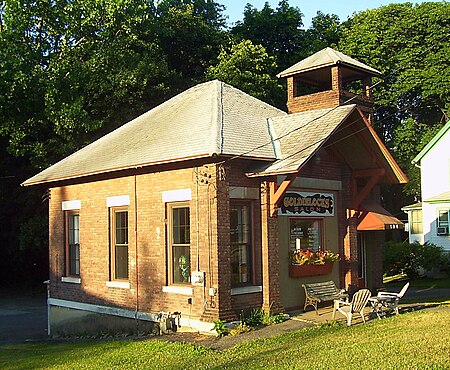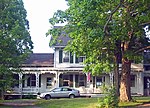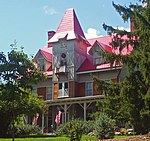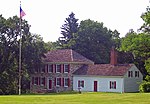Firthcliffe Firehouse
Buildings and structures in Orange County, New YorkCornwall, New YorkDefunct fire stations in New York (state)Fire stations completed in 1900Fire stations on the National Register of Historic Places in New York (state) ... and 1 more
National Register of Historic Places in Orange County, New York

The Firthcliffe Firehouse is located along Willow Avenue in the Town of Cornwall in Orange County, New York, United States. It was built to protect the homes being built by the Firth Carpet Company for workers at its nearby plant in the early 20th century. In 1996 it was added to the National Register of Historic Places. It is currently being used as a hair salon.
Excerpt from the Wikipedia article Firthcliffe Firehouse (License: CC BY-SA 3.0, Authors, Images).Firthcliffe Firehouse
Willow Avenue, Town of Cornwall
Geographical coordinates (GPS) Address Nearby Places Show on map
Geographical coordinates (GPS)
| Latitude | Longitude |
|---|---|
| N 41.4425 ° | E -74.043611111111 ° |
Address
Willow Avenue 173
12518 Town of Cornwall
New York, United States
Open on Google Maps











